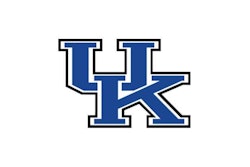
By 1998, MSU student-athletes began to complain about his behavior, which involved inappropriate sexual contact under the guise of examination and therapy, but the university failed to take any action. From 2011 to 2015, the U.S. Department of Education's Office for Civil Rights reviewed the university's procedures, and Nassar entered into a resolution agreement with Michigan State.
But Nassar's behavior continued.
It wasn't until 2016 that extensive reporting by The Indianapolis Star exposed Nassar, as well as the failure of Michigan State, USA Gymnastics and the United States Olympic Committee to stop him.
Michigan State eventually settled with 332 victims for $500 million dollars, while not agreeing to any significant institutional reforms. Although the settlement is staggering, it is perhaps not surprising that the university did not know how to handle this situation properly. The standard for what universities must do to avoid liability for sexual harassment under Title IX is relatively new, confusing, and about to change.
Scandals rampant
Claims for sexual harassment in education were first recognized in 1980 (Alexander v. Yale, 631 F.2d 178, 2nd Cir. 1980). However, claims in university athletic programs did not happen until the 1990s, and the Supreme Court did not allow student claims related to teacher or coach sexual harassment until 1998 (Gebser v Lago Vista Indep. Sch. Dist., 524 U.S. 274, 1998).
A year earlier, in 1997, OCR had published its first Sexual Harassment Guidance, which was republished with modifications in 2001 as Revised Guidance. In situations where a coach or employee conditioned participation on submission to sexual advances, the university will always be liable. More common are situations in which the sexual conduct creates a hostile environment, basically creating a climate where the student-athlete's ability to perform as both a student and athlete suffers.
Schools are left to determine how to deal with these situations, but the Guidance made clear that schools must have well-publicized grievance procedures, and once a responsible employee (virtually any employee) knows or reasonably should know about the harassment, the school may be liable unless it takes immediate and effective corrective action.
In 2006, realizing that schools still did not seem to know what to do when sexual harassment claims came forward, OCR published a Sexual Harassment Letter reminding schools of their responsibility to take immediate and effective steps to end harassing situations and prevent their recurrence. This need to consistently remind schools of their responsibilities has only become more frequent in recent years.
By the 2010s, before the Larry Nassar scandal came to light, sexual harassment scandals were seemingly rampant within college athletics. Schools affected included Baylor, Minnesota, North Carolina and Florida State. In 2014, a White House report found that 20 percent of women are sexually assaulted while in college, but only 12 percent of those victims report the incident to law enforcement. Senator Claire McCaskill's 2014 Sexual Violence on Campus report found that 20 percent of the schools studied did not train their faculty and staff — and 30 percent did not train their students — on how to respond to these situations.
Perhaps as a result of the continuing prevalence of sexual assault, coupled with a high level of underreporting, OCR published three more guidance documents.
The controversial 2011 Sexual Violence Letter began by repeating that 20 percent of collegiate women are victims of attempted or actual sexual assault. It also reiterated that a university must take immediate action when it knows or reasonably should know that one of its students has been subjected to a hostile environment created by sexual harassment.
Two years later, OCR followed up with The Blueprint document on how to act when faced with these situations, making clear that a university should not wait for law enforcement, as its responsibilities under Title IX are separate from criminal law.
Finally, in 2014, perhaps showing its frustration that sexual abuse continued to proliferate on college campuses, OCR released Questions & Answers on Title IX and Sexual Violence, reiterating that students could file both criminal complaints and internal grievances, that universities should conduct investigations regardless of the criminal process, and that universities should adopt a "preponderance of the evidence" standard when reviewing sexual harassment complaints.
Higher hurdle for victims
Meanwhile, two other developments started to change the discussion on sexual harassment. The first came to light most clearly in 2006, when several Duke University lacrosse players were accused of rape. The university acted quickly to suspend them, and criminal authorities rushed to punish them. However, they were eventually found to be innocent.
For many, this narrative added to what some call the "rape myth," an assumption that many allegations of sexual misconduct are either actual consensual conduct, or false stories by alleged victims. The belief in this myth has presumably led to the extensive underreporting of sexual harassment incidents, as many young women do not want to face any accusations that they consented to harassing conduct, and do not trust that universities and law enforcement will adequately assist them.
At the same time, organizations such as the American Bar Association and the American College of Trial Lawyers criticized university processes for not providing proper due process protections to those accused of sexual harassment. They also criticized OCR's promotion of the preponderance-of-the-evidence standard, leading many universities to side with victims if the evidence found is more likely than not in the victim's favor.
By September 2017, OCR withdrew the 2011 and 2014 guidance documents because both "led to the depravation of rights for many students — both accused students denied fair process and victims denied an adequate resolution..." In a separate Q&A that year, OCR made clear that the immediacy demanded in past guidance was no longer a priority and that it would not set a fixed time frame for these types of investigations.
Although OCR pointed back to the 2001 and 2006 guidance, it did not mention any of the other documents published in intervening years. In addition, its initial focus on a "fair process" echoed the concerns brought by the ABA and other groups, and assumptions that male students accused of harassment were not being treated fairly.
In November 2018, OCR proposed new regulations — the first major proposed regulations related to Title IX in more than 40 years — that would set the new standard for how universities are to respond to complaints of sexual harassment. The new regulations would change the definition of a responsible employee who must address incidents of sexual harassment to only those on campus who have "the authority to institute corrective measures," presumably then only those designated as Title IX Coordinators or in similar job titles.
This is a change from the 2001 Revised Guidance that made clear it counted virtually any employee as a responsible employee. In addition, the regulations also provide specific procedures that, if followed, would provide universities with a safe harbor from OCR scrutiny. Given that universities have repeatedly proven that they do not know how to handle sexual harassment complaints, relying on procedural steps in this way gives many universities protection that they have never had before.
Finally, although allowing universities to use a preponderance-of-the-evidence standard in their review of complaints, OCR has now conditioned use of that standard, seemingly encouraging universities to use the "clear and convincing" standard, a much higher hurdle for victims of sexual harassment and assault.
Fair process, reliable outcomes
All the guidance documents provided by OCR from 1997 until 2014 focused on recognizing the continuing incidence of sexual misconduct on college campuses and finding ways to correct the problem. The new regulations instead focus on providing a "fair process" and "reliable outcomes."
In one sense this is not surprising, as the 2001 Revised Guidance instructed schools to honor the due process rights of the accused during any investigations.
In addition, just before releasing the proposed regulations, a federal appellate court made clear that students accused of sexual misconduct must be given full due process rights. In this case a university internal board agreed with an alleged female victim of sexual abuse, without providing the accused with a chance to be heard. The court found that the accused student's rights had been violated because he had a "substantial interest" in being able to provide his account, and it "would have cost the university very little" to provide him with a chance to be heard (Doe v. Baum, 903 F.3d 575, 6th Cir. 2018).
The proposed regulations take this even further, including a section providing for further "Constitutional protections" — for example, universities cannot restrict Due Process and First Amendment rights, and "any other rights guaranteed against government action by the U.S. Constitution." This is particularly troubling, as OCR has never been charged with enforcing the Constitution. Instead, it has the authority to enforce Title IX as provided in the law itself. It remains to be seen how schools will try to manage Constitutional protections within these investigations. Adding further confusion to this, in August the United States Court of Appeals for the First Circuit disagreed with the Sixth Circuit court, finding that due process protections do not mandate that someone accused of sexual harassment has the right to cross examine the alleged victim (Haidak v. Univ. of Massachusetts-Amherst, 2019 WL 3561802, 1st Cir. 2019). Whether the Supreme Court will review this circuit split remains to be seen.
As of this past June, the proposed regulations had received more than 124,000 comments — the majority negative. What will happen next is unclear. The schedule provided with the proposed regulations called for the publication of final regulations this fall.
One can only wonder what the impact will be. While schools could have a new safe harbor in place, they also could have to find a way to develop more adversarial processes to deal with sexual harassment complaints to ensure that both parties are heard.
Due to distrust of the processes in place and fear of reprisal from their abusers, victims already show hesitation to report. This new, more adversarial system seems destined to cause even further declines in reporting. If this occurs, the problem of sexual harassment on college campuses will continue, and those victimized will continue to avoid telling their university's administrators — who they believe will not help them anyway.
This article originally appeared in the October 2019 issue of Athletic Business with the title "How best to curb campus sexual harassment." Athletic Business is a free magazine for professionals in the athletic, fitness and recreation industry. Click here to subscribe.
































